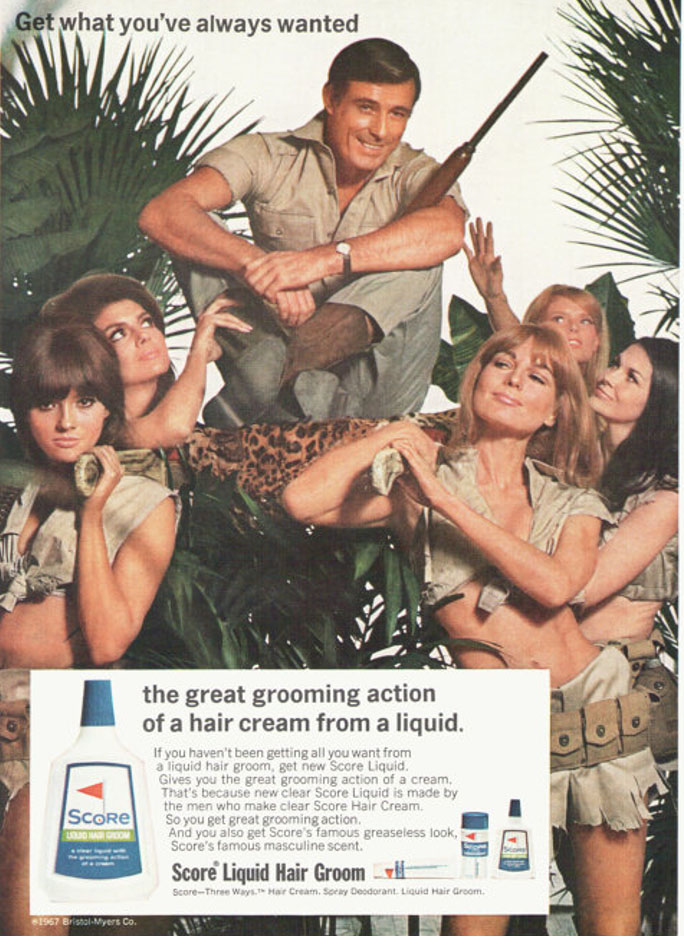In this advert, you can see that there are 5 white women underneath a white male who seems to be held up by some sort of platform covered in a Cheeter print, suggesting that they’re in the jungle. The 5 women are almost draped over this man wearing little amounts of clothing, which appeals to men.
This advert is definitely reactionary as its target audience is males in their 30-50s who most likely want to appeal to women. With having these skinny women draped around him, it suggests that by using this product, women will automatically find you attractive. With having the women wearing provocative clothes, it just reinforces the target market as males will find these women attractive and think they have a chance to ‘win’ a similar looking women after using the product.
The man is also holding some sort of hunting gun, which proves my point further about him being above all people because he’s ‘really masculine’. This suggests that only men are allowed to go hunting and women can only throw themselves at ‘manly’ men instead of doing things for themselves.
The word ‘Masculine’ is actually used in the description of this advert in the phrase ‘Score’s famous masculine scent’. This indicates the fact that if you use the product, not only will you look good and appeal to women, you will also appear masculine AND smell masculine.
The description of the product is rather repetitive and poorly written. This may be repetitive to get their point across of how it’s all men want. By repeating the name of the product many times, it gets it into people’s heads and they will most likely buy it because they remember it more.
There is a clear narrative of being above people. Before he used the ‘Score’ product, he was just an average man with ‘greasy hair’ and then he used it and now he’s above all women with the ‘perfect’ hair. You can see that there are no People of Colour in this advert, which indicates that he is also above all people who aren’t white.
The strapline ‘Get what you’ve always wanted’ suggests that every man who sees this advert has ‘always wanted’ this product and that it is some sort of life saver. It doesn’t seem like a very good strapline that will encourage people to purchase the item, it seems rather dull and possibly narcissistic, assuming their hair product is what people have always wanted.
When looking at the Iconic sign (image) of the product, it reminds me of a bottle of super glue, which would be a negative effect on them as that is the last thing you would want to put on your hair. If they really wanted to embrace masculinity, they should have the hair product in a more manly, masculine bottle that boosts their confidence when buying it, instead of a small clear/transparent bottle as it looks like they’ve put little to no effort on the design.
Not only is there a lack of representation for People of Colour, but there is also a lack of representation of the lgbtq+ community. For example, they say that only men who want to be masculine and want to attract women can purchase and wear this product, when in reality, people with any gender and any sexuality can wear it too. If for example, a male doesn’t want to present himself as masculine, the advert almost shames him for not being a ‘real’ man.



